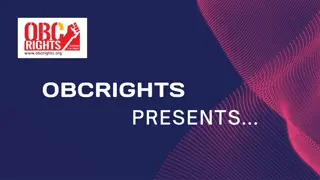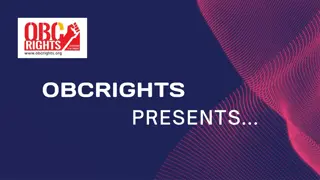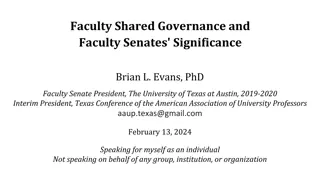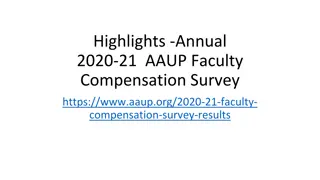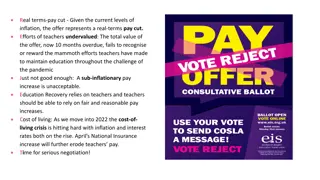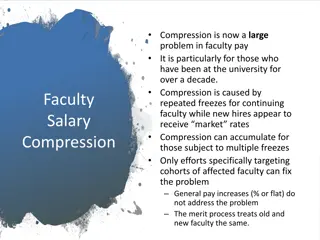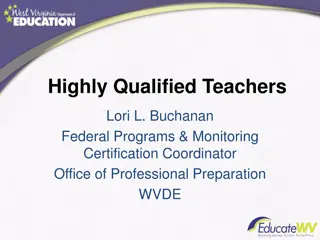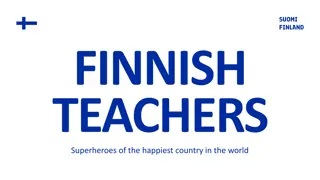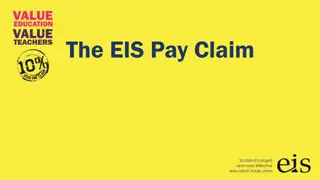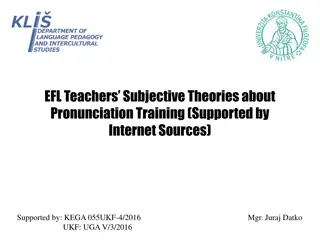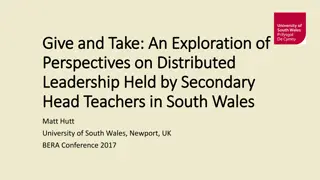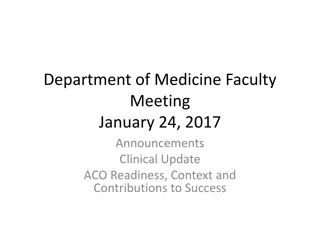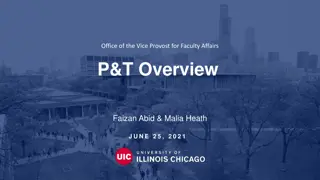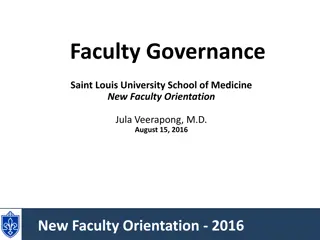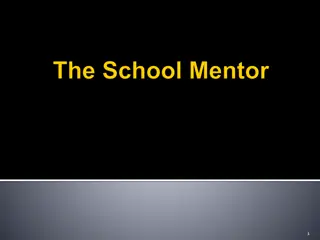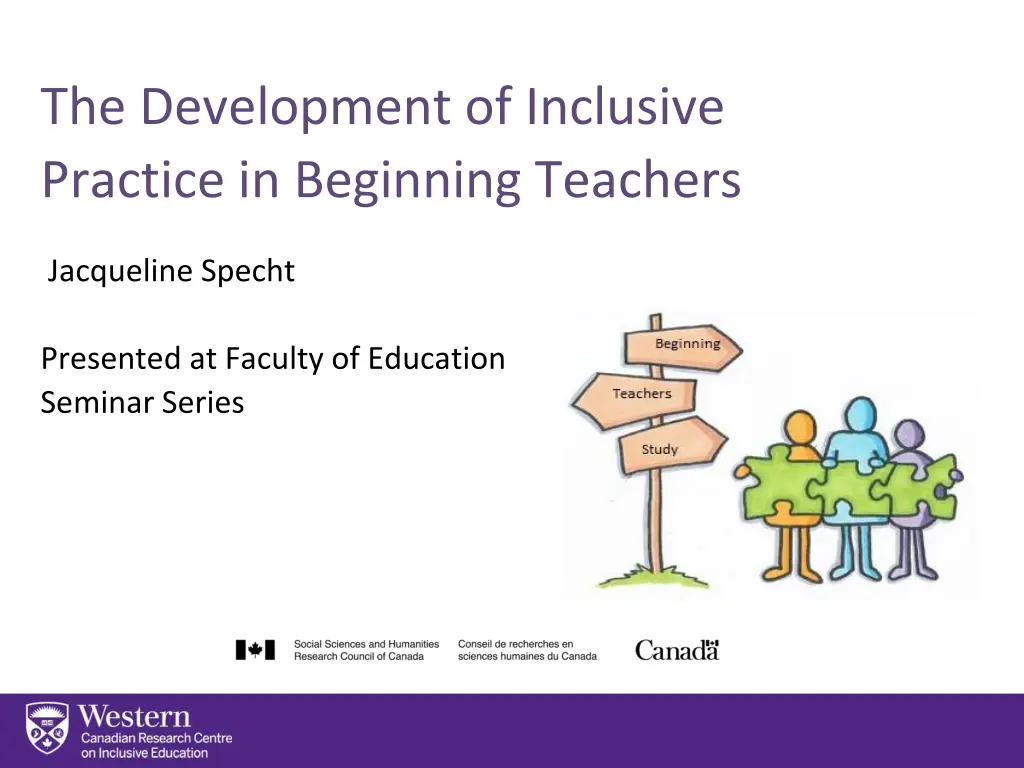
Inclusive Practices for Beginning Teachers
Explore the development of inclusive practices in beginning teachers, focusing on pre-service education and experiences influencing beliefs, teacher efficacy, and instructional practice. The study delves into the importance of inclusive education and how it impacts classroom communities.
Download Presentation

Please find below an Image/Link to download the presentation.
The content on the website is provided AS IS for your information and personal use only. It may not be sold, licensed, or shared on other websites without obtaining consent from the author. If you encounter any issues during the download, it is possible that the publisher has removed the file from their server.
You are allowed to download the files provided on this website for personal or commercial use, subject to the condition that they are used lawfully. All files are the property of their respective owners.
The content on the website is provided AS IS for your information and personal use only. It may not be sold, licensed, or shared on other websites without obtaining consent from the author.
E N D
Presentation Transcript
The Development of Inclusive Practice in Beginning Teachers Jacqueline Specht Presented at Faculty of Education Seminar Series
Land Acknowledgement I acknowledge that Western University is located on the traditional lands of the Anishinaabek, Haudenosaunee, L naap ewak and Chonnonton peoples, on lands connected with the London Township and Sombra Treaties of 1796 and the Dish with One Spoon Covenant Wampum.
Inclusion Inclusion is the same right to a quality education within their communities for all learners. (UNESCO, 1999, p. 21). Belief that all students belong and are valued members of their classroom and neighbourhood school communities Schools can be effective and inclusive
3H Framework: Pre-Service Teacher Education for Inclusion (Umesh Sharma) Heart (beliefs, values) Head (knowledge, skills) Hands (practical application)
Rationale for Study Pre-service teacher education is a key time to influence the development of the heart, head, and hands Need a better understanding of why and how different experiences contribute to the development of inclusive beliefs, teacher efficacy, and instructional practice, at the beginning of their careers
Group Concept Mapping Step 3: Give unique statements to participants for sorting Step 1: Identify participants and research question Step 2: Transcribe interviews Step 4: Apply statistical analyses to generate concepts Step 6: Create computer generated concept map Step 5: Label the concepts
Interview questions What experiences have contributed to your beliefs in how children learn in diverse classrooms? What experiences have influenced the instruction that you use in diverse classrooms? What has contributed to your level of confidence for teaching in diverse classrooms?
Interview Participants Fifty-one (42 women; 9 men) pre-service teachers from 12 faculties of education across Canada interviewed at end of initial teacher education program Mean Age was 32 years (SD=6.2) White (82%); East Asian (8%); Indigenous (4%); Chinese/German (2%); Egyptian (2%); French Canadian (2%) 57% intended to teach in the elementary system (Grades K-8); 43% intended to teach in the secondary system (Grades 9-12)
Sorting Participants 18 pre-service teachers (15 women; 3 men) from 10 of the faculties of education across Canada White (89%), Black (5%) and Indigenous (5%) Mean Age was 28.3 years, (SD = 6.1) 61% of the participants intended to teach in the elementary system (Grades K-8); 38% intended to teach in the secondary system (Grades 9-12)
Analysis (steps 4-6) Step 1 Step 2 Step 3 Step 4: Apply statistical analyses to generate concepts Step 6: Create computer generated concept map Step 5: Label the concepts
Cluster Map Beliefs (79 statements) Each of the 4 clusters contained 16-27 statements with an average bridging value between 0.21 and 0.54, which was a very good representation of the data. 2. Education 4. Practicum/ Collaboration 1. Personal Experience with Diversity 3. Work Experiences
Experiences - Beliefs Cluster 1: Personal Experience with Diversity Cluster 3: Work Experiences Teaching marine sciences to students who came on field trips. I was identified as gifted in school. I have a learning disability. Work at the Ministry of Justice with young offenders. My own learning style. Working with a therapeutic riding program. Cluster 2: Education Cluster 4: Practicum/Collaboration Courses in Philosophy that I have taken. Conversations with my associate teacher on practicum. The Psychology courses that I have taken. Talking with the principal during practicum experiences. The course work in my other degrees. Seeing inclusivity modelled during practicum.
Cluster Map Efficacy (76 statements) Each of the 5 clusters contained 7 to 18 statements with an average bridging value between 0.19 and 0.65, which was a very good representation of the data. 5. Professional Development Opportunities 4. Collaborating with Colleagues 3. Community Support 1. Applying knowledge to teaching 2. Experiences with Diversity
Experiences - Efficacy Cluster 1: Applying Knowledge to Teaching Cluster 3: Community Support Getting to know students and their interests Having a peer colleague Taking the application of the theoretical background and seeing it into practice Having support from parents Range of placements with different financial and emotional needs Having support from principals Cluster 4: Collaborating with Colleagues Cluster 2: Experience with Diversity Brainstorming with my associate teachers Coaching Special Olympics Troubleshooting with the Special Education Resource Teacher I am a diverse learner My associate teachers gave me reassurance that I am doing a good job Working in the office for students with disabilities at university
Experiences - Efficacy Cluster 5: Professional Development Opportunities Attending conferences Additional literature and on-line resources The teacher education program
Cluster Map Instructional Practice (93 statements) Each of the 6 clusters contained 16 to 24 statements with an average bridging value between 0.15 and 0.58, which was a very good representation of the data. 2. 1. Practicum Experiences Mentoring Relationships 3. Education Program 5. Past Jobs 4. Professional Development 6. Personal Life Experience
Experiences Instructional Practice Cluster 1: Practicum Experiences Cluster 3: Education Program Observing a student with severe physical disability have conversations in her own way with her classmates Talk through scenarios in a teacher education university course with hints of what you might do in the future A course in the teacher education program on creating healthy, safe, and supportive learning environments In most recent practicum I have many different students with many different learning needs Hands on experience that the practicum gives you A mental health literacy course during teacher education program Cluster 2: Mentoring Cluster 4: Professional Development My second mentor teacher was really into the inclusive classroom approach and, she encouraged me to consider them in my lessons Doing my own readings and research A workshop on student anxiety and the IEP process Talking to mentor teachers or administrators about different strategies A summer institute in diversified education: teaching to differentiated instruction, universal design for learning Observations of EA in practicum
Experiences Instructional Practice Cluster 5: Past Jobs Cluster 6: Personal Life Experiences I have a learning disability and I also have ADHD so those two things combined have allowed me to better understand my student Working with people with different disabilities and ages Instructor in swimming lessons Living abroad and travelling Having my own kids gave me an interesting perspective on how children develop and how different they can be Previously worked as an EA in the schools with special needs students
Comparison 1(not at all impt)-6(very impt) Beliefs Efficacy Instructional Practice Mentoring Relationship (M=4.71, SD=0.69) Practicum/Collaboration (M=5.11, SD=0.49) Applying Knowledge to Teaching (M=5.15, Sd=0.16); Collaborating with Colleagues (M=4.88, SD=0.59) Practicum Experiences (M=4.47, Sd=0.64); Education Program(M=4.45, SD=0.69) Personal Experience with Diversity (M=4.43, SD=0.58); Work experience (M=4.34, Sd=0.60) Community Support (M=4.32, SD=0.63); Experience with Diversity (M=4.16, SD=0.64) Professional Development (M=4.09, SD=0.79); Education (M=3.75), SD=0.77) Personal Experiences (M=3.21, SD=1.08); Past Jobs/Positions(M= 3.09, SD=1.14) Professional Development Opportunities (M=3.61, SD=0.69)
Implications for Practice People on their practicum are extremely important for supporting their beliefs, efficacy and instructional practice. Mentoring and collaboration are key (HANDS) Experience with diversity supports beliefs and efficacy. May be experience to bring to their initial teacher education programs but perhaps we can provide those inclusive opportunities (HEARTS) Knowledge is seen as least important for Beliefs and Efficacy, but more important for Instructional Practice (HEAD)
Questions Jacqueline Specht jspecht@uwo.ca Twitter: @JacquelineSpec9


